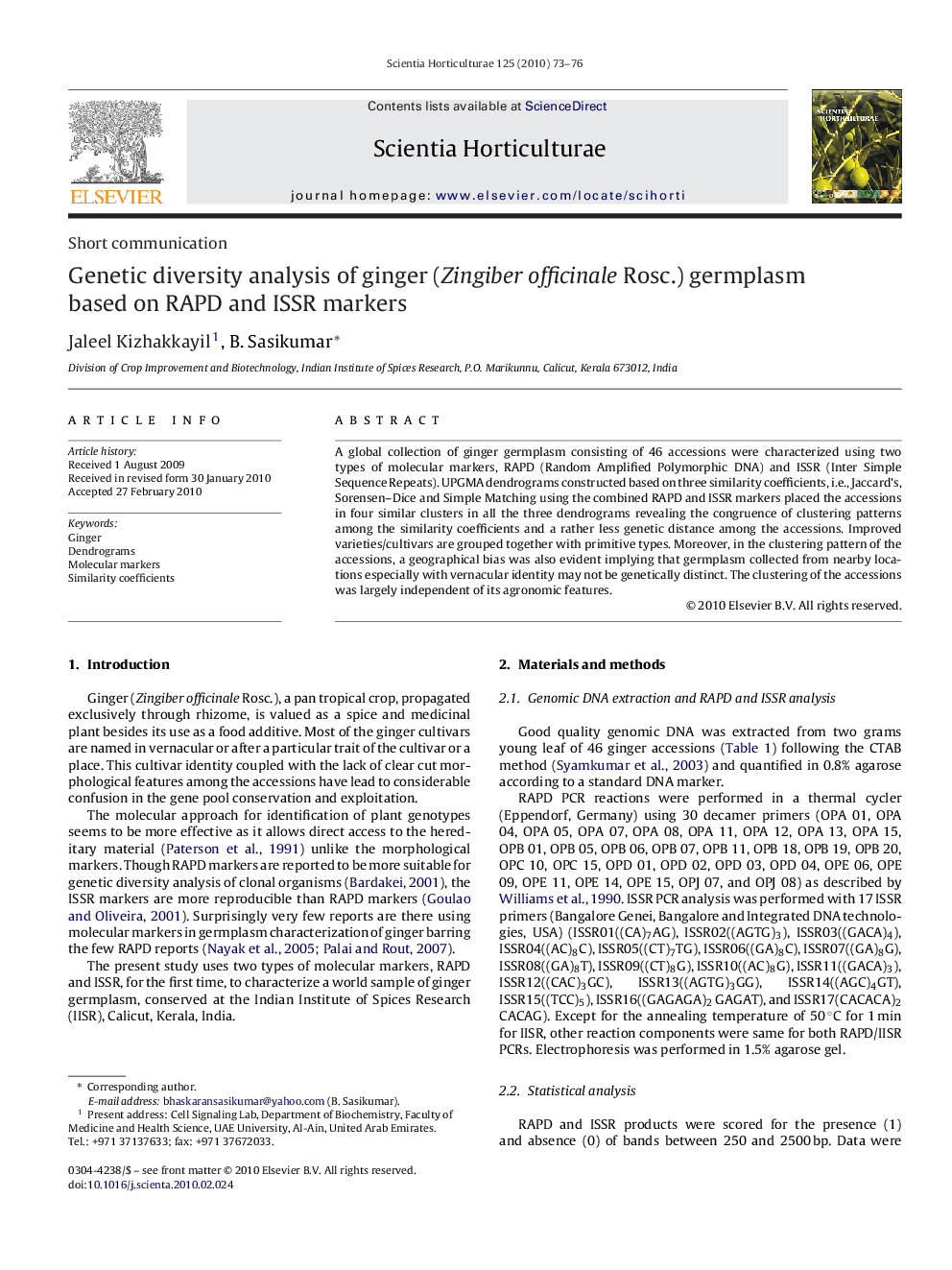| Article ID | Journal | Published Year | Pages | File Type |
|---|---|---|---|---|
| 4568896 | Scientia Horticulturae | 2010 | 4 Pages |
A global collection of ginger germplasm consisting of 46 accessions were characterized using two types of molecular markers, RAPD (Random Amplified Polymorphic DNA) and ISSR (Inter Simple Sequence Repeats). UPGMA dendrograms constructed based on three similarity coefficients, i.e., Jaccard's, Sorensen–Dice and Simple Matching using the combined RAPD and ISSR markers placed the accessions in four similar clusters in all the three dendrograms revealing the congruence of clustering patterns among the similarity coefficients and a rather less genetic distance among the accessions. Improved varieties/cultivars are grouped together with primitive types. Moreover, in the clustering pattern of the accessions, a geographical bias was also evident implying that germplasm collected from nearby locations especially with vernacular identity may not be genetically distinct. The clustering of the accessions was largely independent of its agronomic features.
